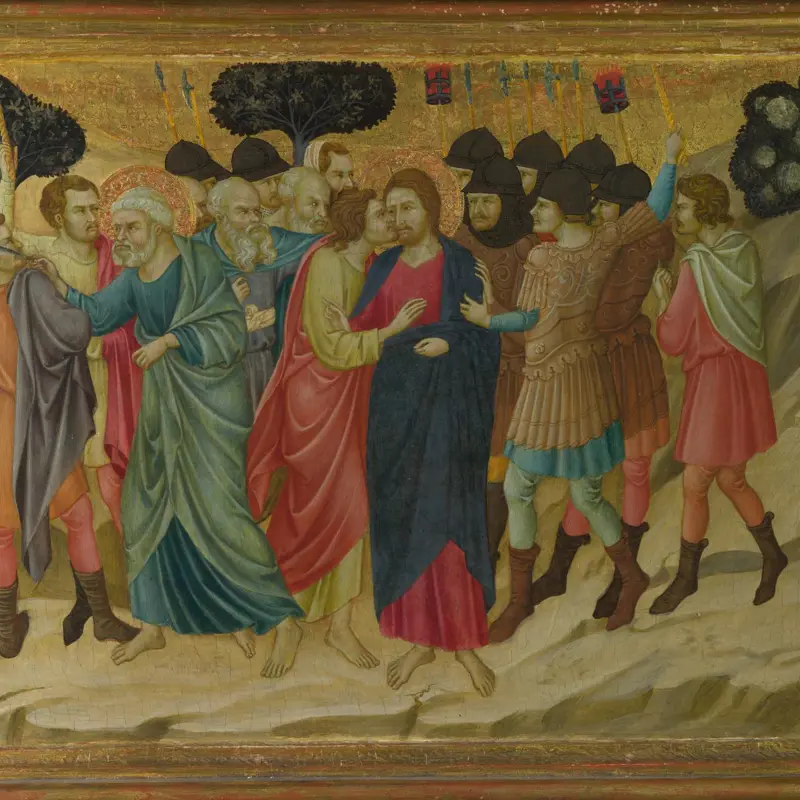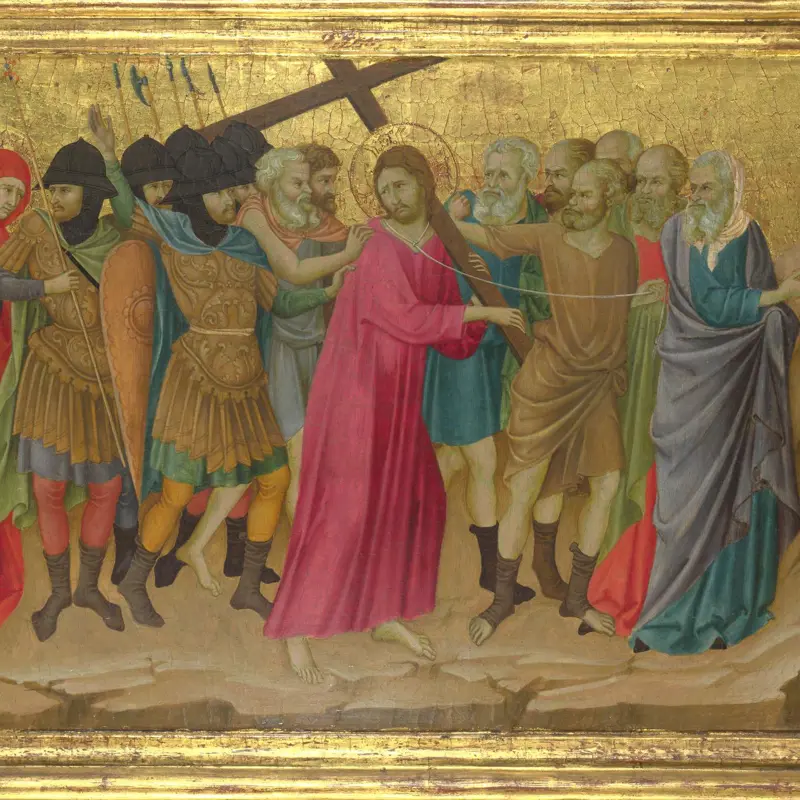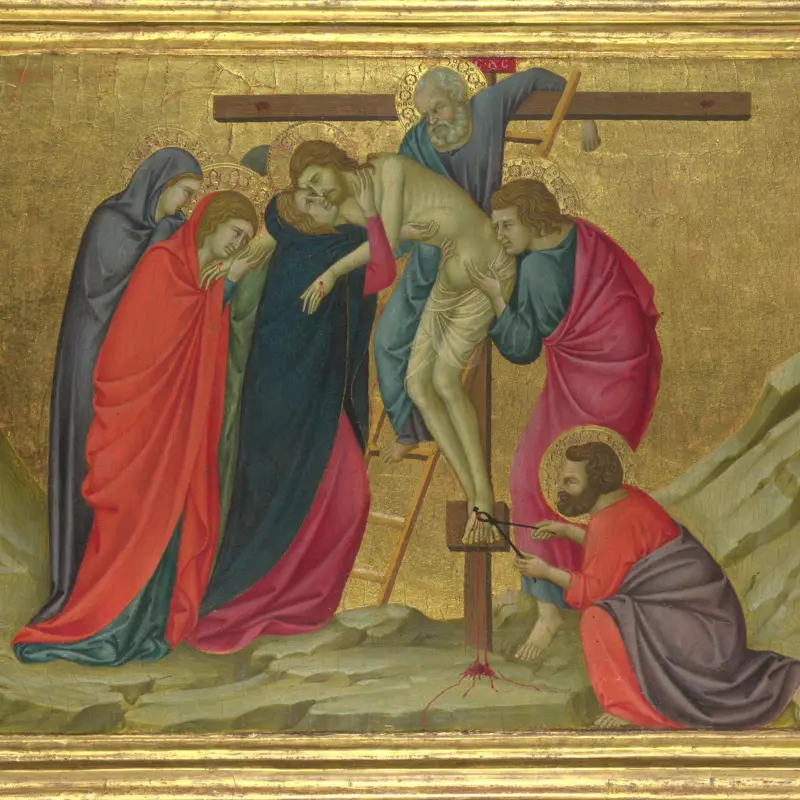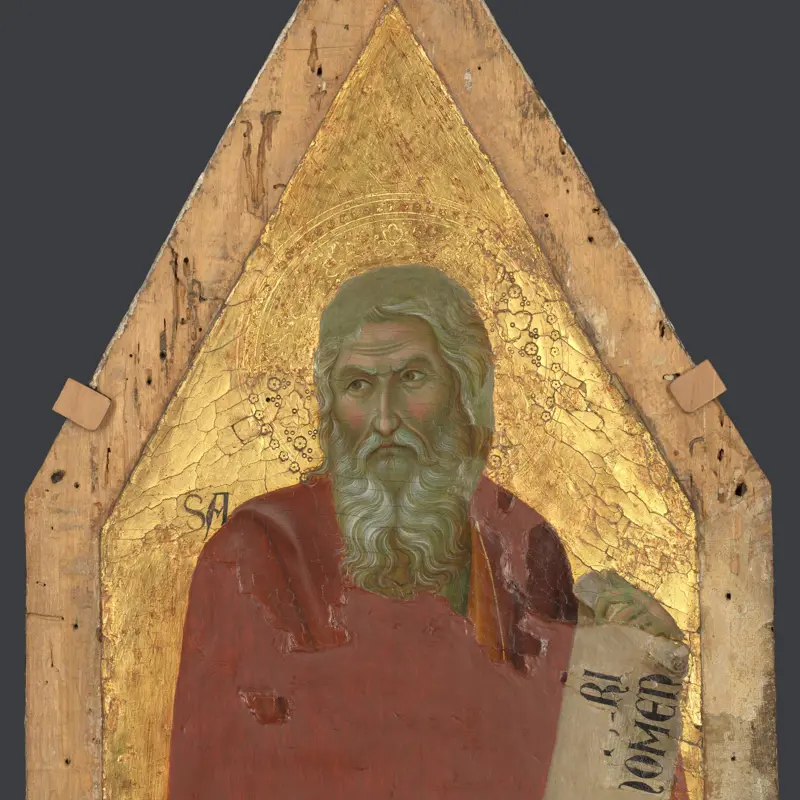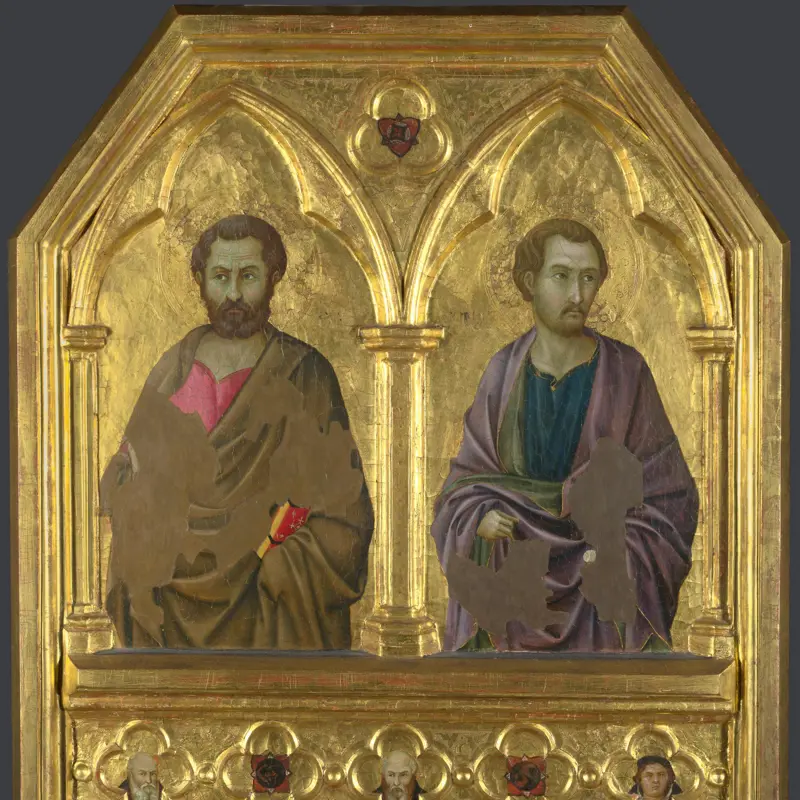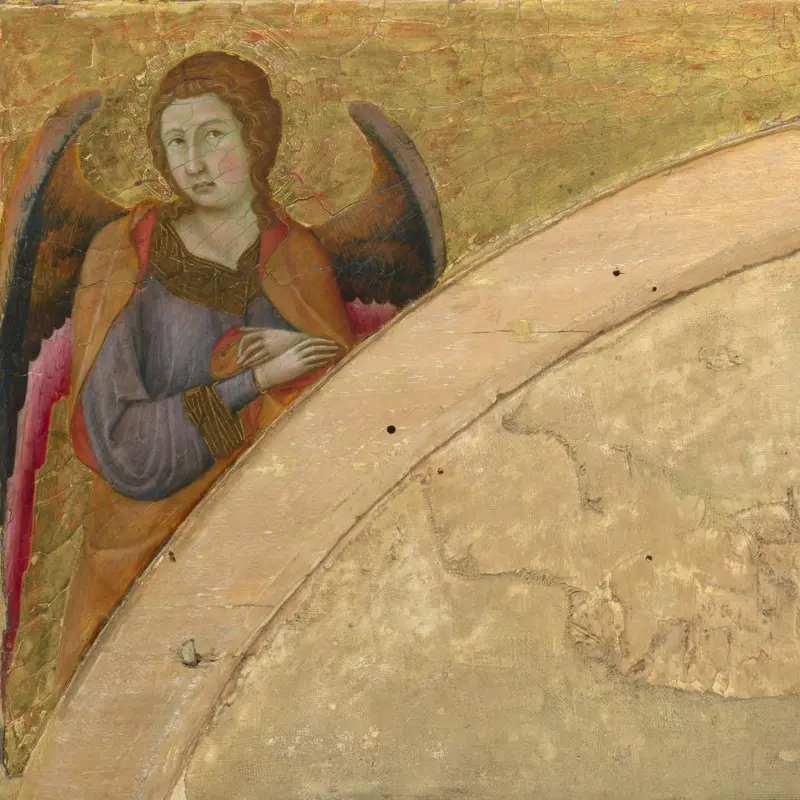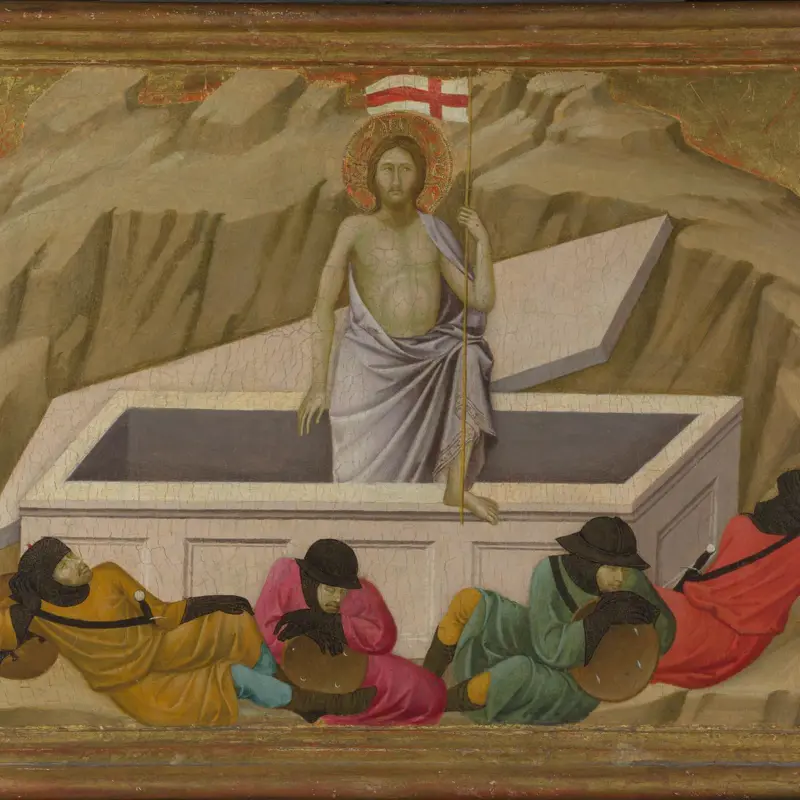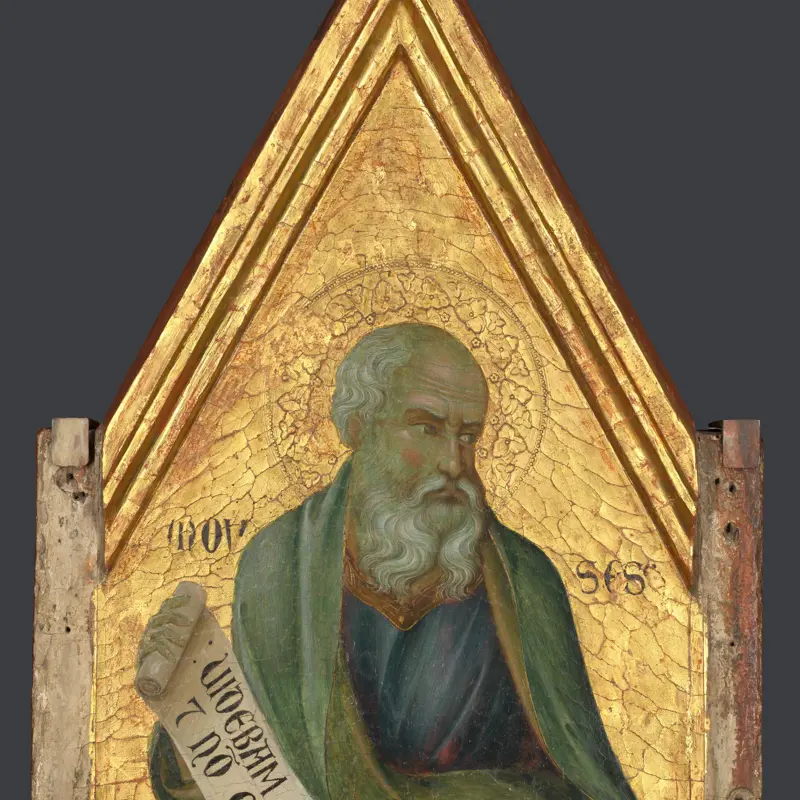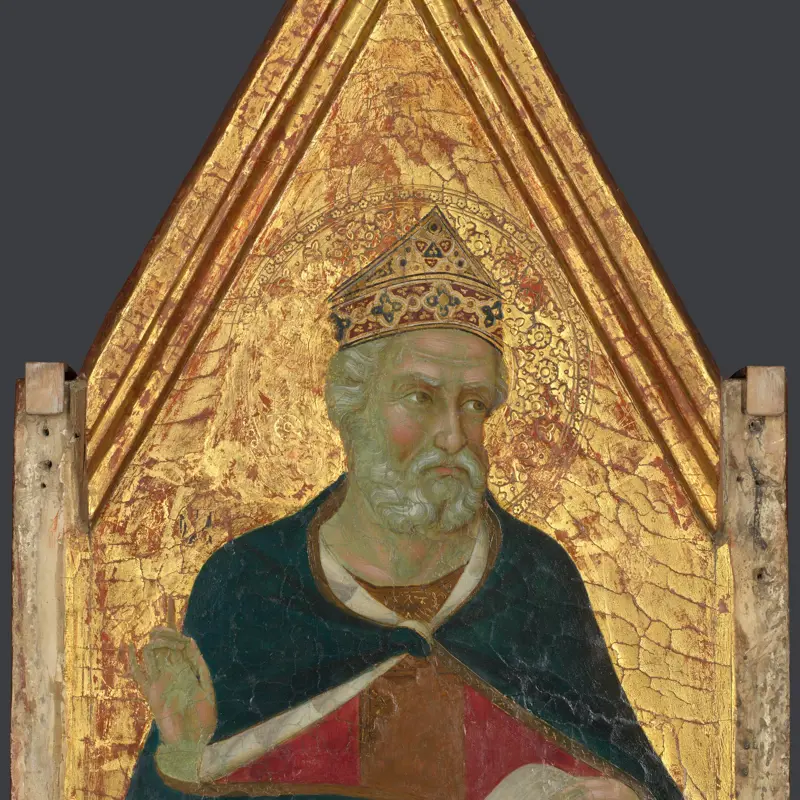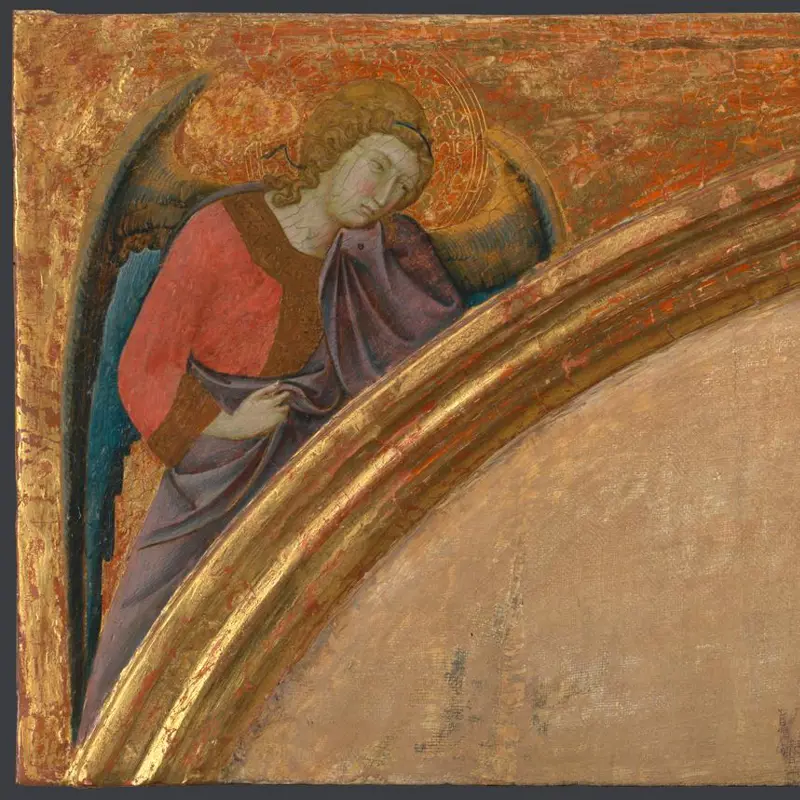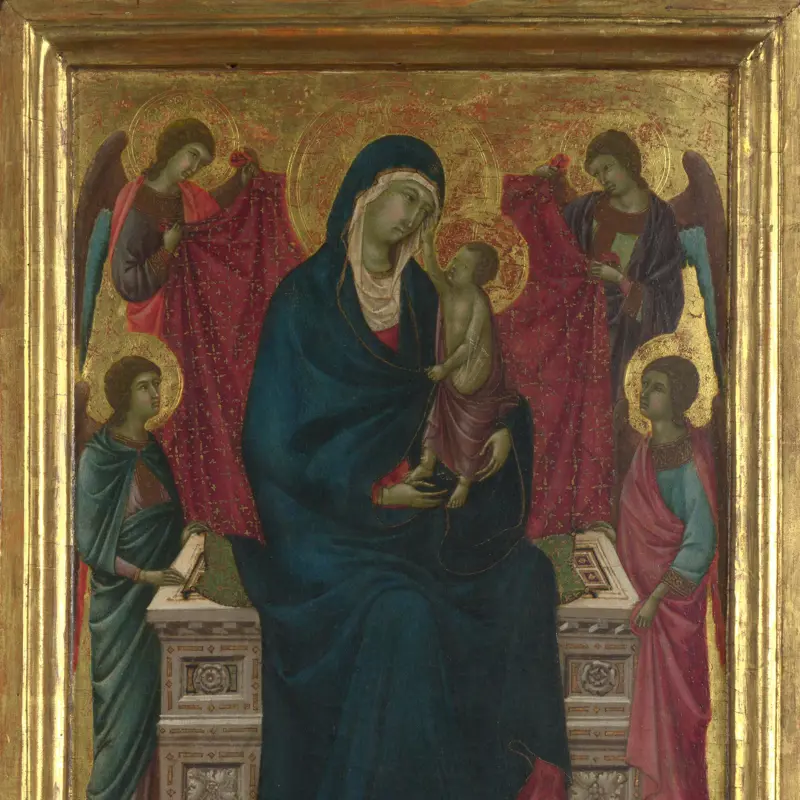Ugolino di Nerio, 'The Way to Calvary', possibly 1325-8
About the work
Overview
This panel was the central scene of the predella (the lowest part of the altarpiece below the main level) that Ugolino made for the church of Santa Croce in Florence. It shows Christ carrying the Cross to the site of his crucifixion as described in the Gospel of John (John 19: 17). His deep pink robe and the structure of the Cross anchor the scene.
Christ’s mother, the Virgin Mary, is the other prominent figure. She is shown, as was traditional, wearing a blue robe. It was painted with ultramarine, an expensive pigment which is bright blue when fresh, but which has a tendency to darken over time, as it has here. The soldiers' helmets have also darkened over time – they were once silver. Mary is accompanied by two other women, probably the female followers of Christ mentioned in the Gospels, both also called Mary. One of them, Mary Magdalene, was traditionally shown wearing red.
Key facts
Details
- Full title
- The Way to Calvary
- Artist
- Ugolino di Nerio
- Artist dates
- Documented 1317-27; died possibly 1329
- Part of the series
- The Santa Croce Altarpiece
- Date made
- Possibly 1325-8
- Medium and support
- Egg tempera on wood (probably poplar)
- Dimensions
- 40.8 × 58.5 cm
- Acquisition credit
- Bought, 1885
- Inventory number
- NG1189
- Location
- Room 58
- Collection
- Main Collection
- Previous owners
- Frame
- 14th-century Sienese Frame (original frame)
Provenance
Additional information
Text extracted from the ‘Provenance’ section of the catalogue entry in Dillian Gordon, ‘National Gallery Catalogues: The Italian Paintings before 1400’, London 2011; for further information, see the full catalogue entry.
Bibliography
-
1878Royal Academy of Arts, Exhibition of Works by the Old Masters, and by Deceased Masters of the British School: Including a Special Selection from the Works of the Principal Representatives of the Norwich School, London 1878
-
1951Davies, Martin, National Gallery Catalogues: The Earlier Italian Schools, London 1951
-
1955E.K. Waterhouse, Exhibition of Italian Art from the 13th Century to the 17th Century (exh. cat. Birmingham CMuseum and Art Gallery, 18 August - 2nd October 1955), Birmingham 1955
-
1986Davies, Martin, National Gallery Catalogues: The Earlier Italian Schools, revised edn, London 1986
-
1988Gordon, Dillian, National Gallery Catalogues: The Early Italian Schools before 1400, revised edn, London 1988
-
2001
C. Baker and T. Henry, The National Gallery: Complete Illustrated Catalogue, London 2001
-
2011Gordon, Dillian, National Gallery Catalogues: The Italian Paintings before 1400, London 2011
About this record
If you know more about this work or have spotted an error, please contact us. Please note that exhibition histories are listed from 2009 onwards. Bibliographies may not be complete; more comprehensive information is available in the National Gallery Library.
Images
About the series: The Santa Croce Altarpiece
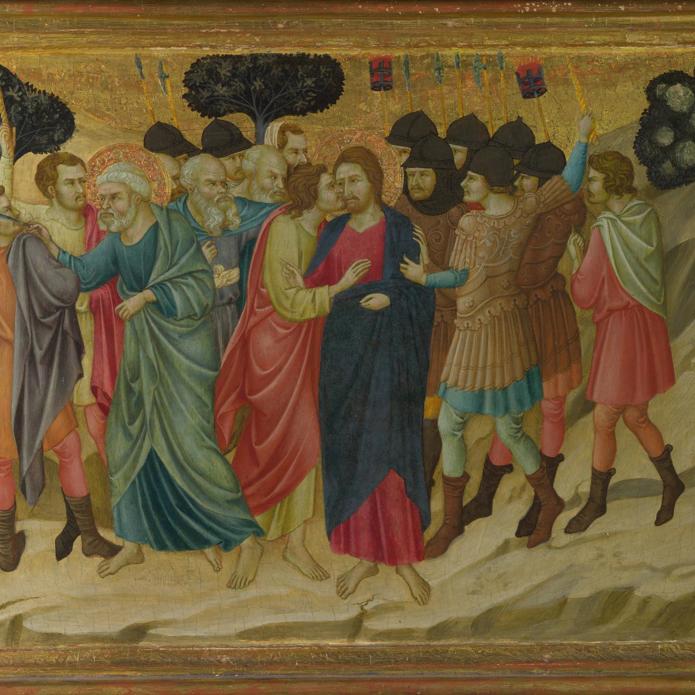
Overview
These panels were once part of a large altarpiece which adorned the high altar of the church of Santa Croce in Florence. It focused on the Passion of Christ (his torture and crucifixion) and the Resurrection – an appropriate theme, as the church was dedicated to the Holy Cross.
Drawings made in the late eighteenth century show how it was arranged originally. There were four tiers of images: the main tier had a central image of the Virgin and Child flanked by images of the saints within arches, which were decorated with angels (there are two sets of these in the National Gallery’s collection).
Above was a row of saints framed in pairs; we hold two pairs. The uppermost tier consisted of six pinnacle panels, three on either side of a central image which probably showed the Crucifixion, itself topped by an image of Christ making a blessing gesture. The predella (the lowest layer) consisted of seven scenes showing Christ’s suffering and death; we have four of these.

